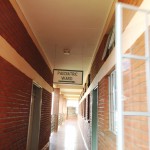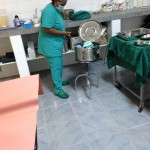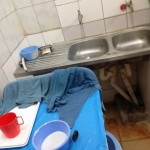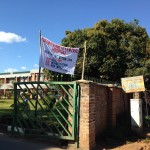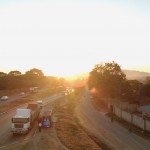Sorry for the long delay in posts! My small computer has been otherwise occupied over the past couple days trying to run a couple of programs for DataPall (a topic that we’ll save for later, as I think deserves its own post).
Last week, I did something a bit uncommon for a non-premed engineer—shadowing doctors. Even though it was a tiny bit outside of my comfort zone, its been quite the experience to directly interact with patients and to see how the everyday process of diagnosis and prescription works.
Paediatric Ward
Many of the technologies that we’ve brought are geared towards neonatal and paediatric patients, including the neonatal thermometers, temperature probe, phototherapy dosing meter, and BabyMetrix (which Jesal did an awesome post about). So I was really excited about the chance to shadow the paediatrician during his rotations. It was interesting seeing how meticulous and careful the doctor was in checking up on his patients, and how he seemed to emit genuine empathy towards the patients, at a level not oftentimes seen in Western hospitals.
That being said, you still cannot compare the standard of care to that of a Western hospital. While the doctors and nurses work extremely hard to ensure that their patients have the best chances of a successful recovery, if all the ports on the oxygen concentrator are being used and a child with TB comes in, not much can be done. This dichotomy reminded me of a passage in A Heart for the Work (which I enthusiastically recommend to everyone!), where the author argues that the ‘ideal doctor’ presented to Malawian doctor was not one of supreme technical expertise sometimes at the sacrifice of empathy (which is oftentimes the case in the West). No, an ideal doctor in Malawi was one who had a heart for the work, combining technical expertise with humanity, as in grave circumstances, the patient can at least felt looked after and cared for.
Surgery
Truce and I also had the opportunity to observe two surgeries earlier this week (at a safe distance of course)! A professor at Rice is developing a sterile processing unit for low resource settings, so we kept a close eye on the sterile workflow of surgeons and nurses throughout the procedure (e.g. how an instrument moves from the ‘sterile space’ to the operating space, how biohazards are contained, etc). I got a bit queasy when the surgeons started cutting through layers of muscle and fat, and then seeing various types of multi-colored fluids gush of the the openings; but at the very least, the experience reaffirmed that medicine wouldn’t really be for me (sorry Mom and Dad!).
As I’ve mentioned before, I feel that as an engineering student who eventually wants to work on problems relevant to global health, oftentimes it is simply not enough to come up with a good technical solution; it also needs to be able to be easily integrated into a healthcare professional’s workflow and be easy to use. Therefore, I think it is incredibly useful to be able to see how the doctors and nurses work and utilize different technologies on a daily basis.
Blantyre
We also visited Blantyre last weekend! We needed to take a huge suitcase full of Bililights, bCPAP materials, and various other technologies. It was a ton of fun exploring Blantyre and hanging out with the interns there! But, I think my favorite part was visiting the Blantyre market—we’ve gotten used to the somewhat limited selection in Namitondo/Namitete, so seeing rows of spices and all kinds of fruits and vegetables was more than enough to make my mouth water.
Quote of the Day
“It’s nsima time!” – Everybody
